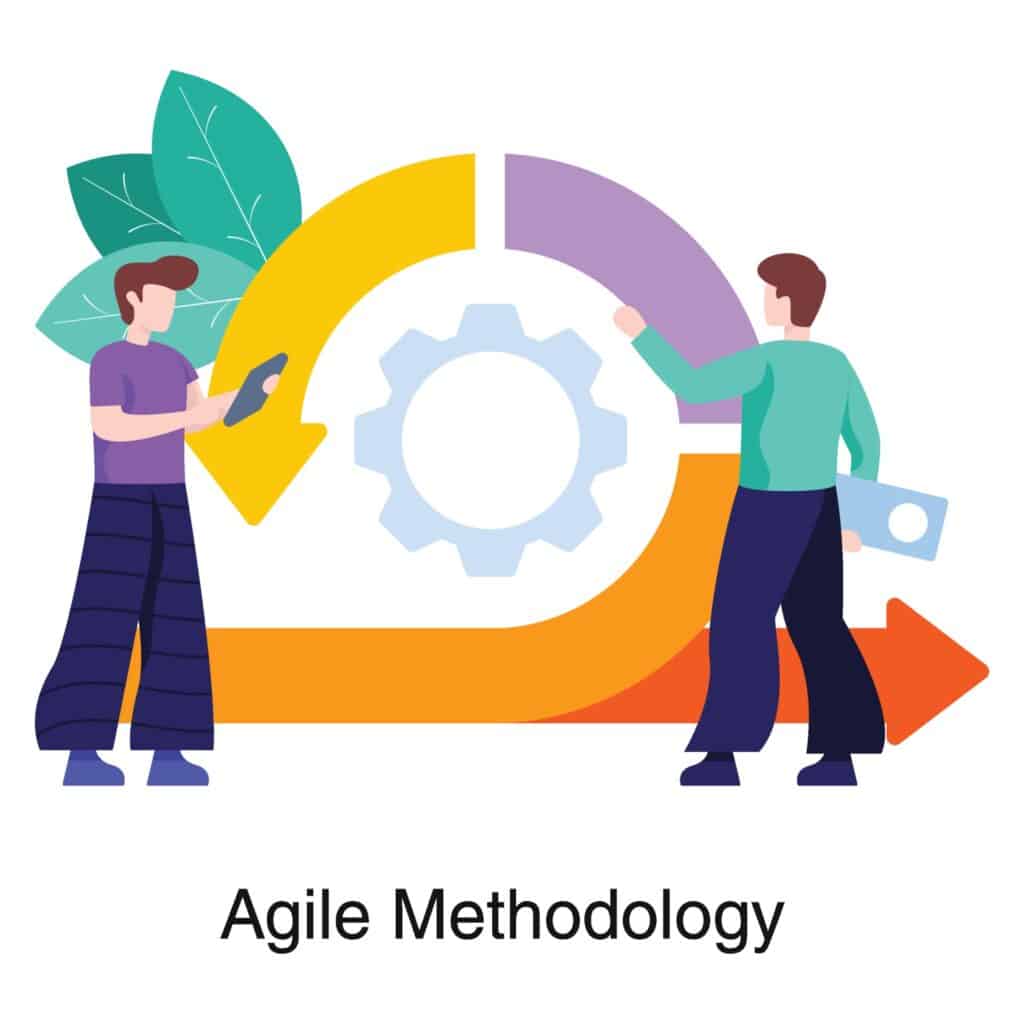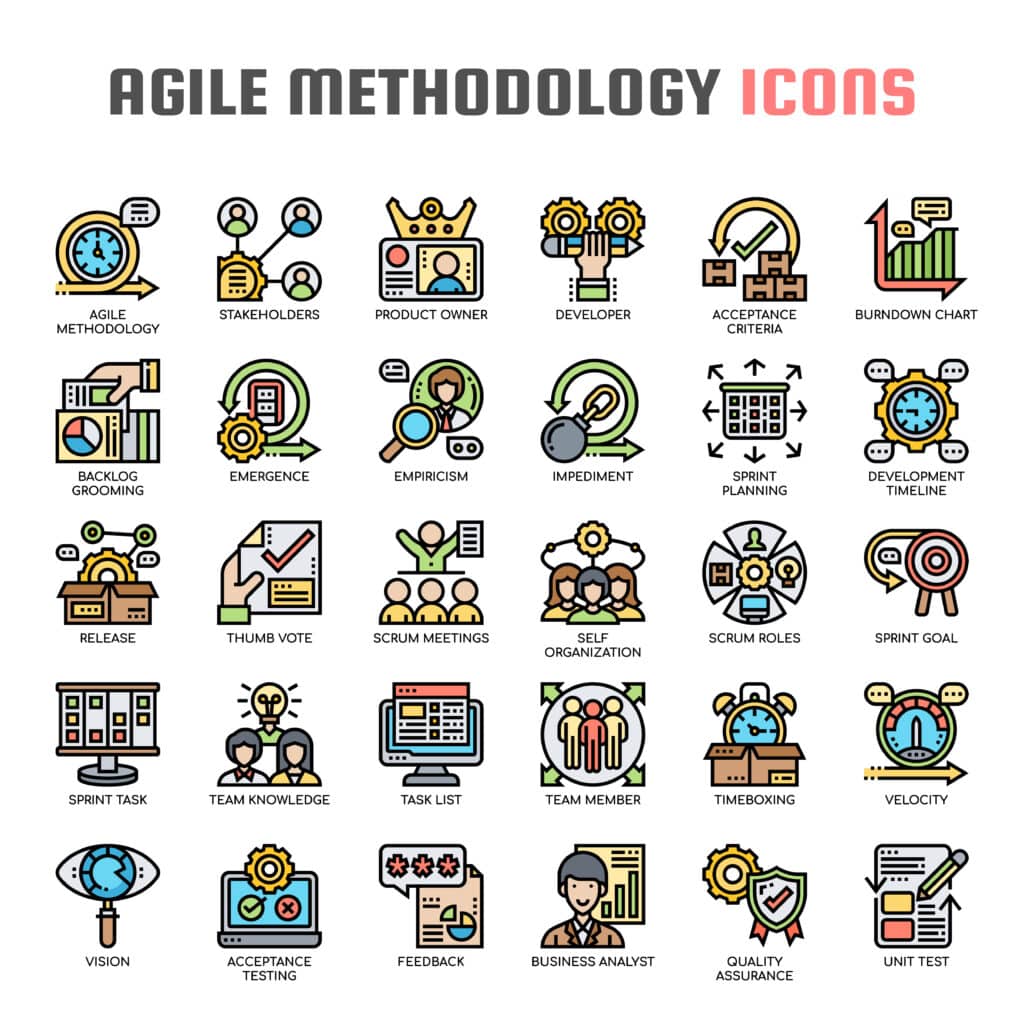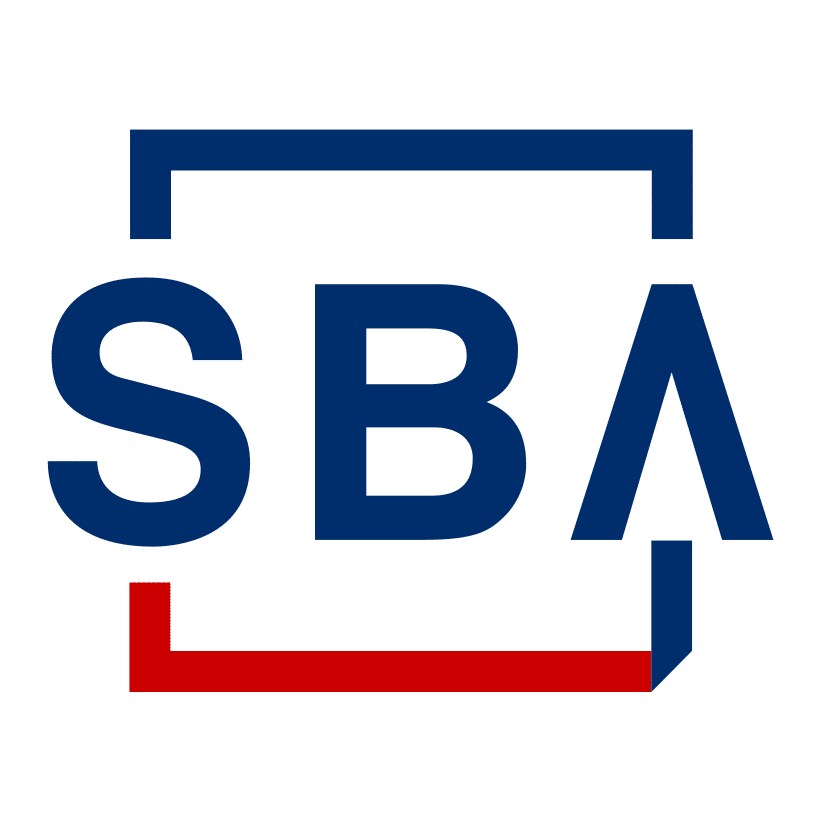What is Agile Development?
The Agile development cycle, often referred to as the Agile Iterative Cycle or the Agile Process, is a series of iterative and incremental steps taken by Agile development teams to create and deliver high-quality software in a flexible and responsive manner. The Agile development cycle enables teams to continuously adapt to changing requirements, prioritize user feedback, and deliver high-quality, valuable software in a flexible and responsive manner.

The Agile development cycle typically consists of the following stages
1 – Planning
At the beginning of the development cycle, the team collaborates with stakeholders to identify, prioritize, and estimate the tasks required to achieve the project goals. These tasks, often called user stories or features, are added to a prioritized backlog, which serves as a roadmap for the project.
2 – Iteration Planning
The team selects a set of tasks from the backlog, based on their priority and the team’s capacity, to work on during the upcoming iteration. An iteration is a time-boxed period, usually lasting between one and four weeks, during which the team focuses on completing the chosen tasks.
3 – Daily Stand-ups
During the iteration, the team holds brief, daily meetings (usually around 15 minutes) to discuss their progress, share updates, and address any challenges or obstacles they encounter. This frequent communication helps to ensure that the team is aligned and working efficiently.
4 – Development
Team members work on their assigned tasks, collaborating with each other as needed. Agile development emphasizes practices such as cross-functional collaboration, rapid prototyping, and iterative refinement to ensure high-quality outcomes and efficient teamwork.
5 – Testing and Validation
Throughout the development process, the team continuously tests and validates their work to ensure that it meets the needs and expectations of the users and stakeholders. This might involve user testing, expert reviews, or other methods of evaluation, depending on the specific design discipline.
6 – Review/Demo
At the end of the iteration, the team presents the completed work to stakeholders during a review or demo session. This provides an opportunity for the team to gather feedback, validate their work, and ensure that the product or solution meets the needs of the users and stakeholders.
7 – Retrospective
After the iteration review, the team conducts a retrospective meeting to evaluate their performance during the iteration, identify areas for improvement, and discuss any adjustments that should be made to the process for the next iteration.
8 – Repeat
The cycle starts again with planning for the next iteration, during which the team selects a new set of tasks from the backlog to work on. This iterative process continues until the project is completed or the team’s priorities change.
Agile Values
The Agile Manifesto, published in 2001, outlines four key values (Beck et al., 2001). Agile development is a set of principles and practices that prioritize adaptability, collaboration, and customer satisfaction. By following these values, Agile Development as a process aims to create a more flexible, adaptive, and efficient approach to software development, leading to higher-quality products and increased customer satisfaction.
Individuals and interactions over processes and tools
Agile Development prioritizes people and their ability to collaborate effectively. Team members should have the autonomy and support they need to make decisions and solve problems. While processes and tools are important, they should be used to facilitate communication and teamwork, not hinder them.
Working software over comprehensive documentation
Agile Development focuses on delivering functional, valuable software in incremental stages rather than producing extensive documentation before starting development. This iterative approach allows teams to quickly respond to changes in requirements and continuously improve the product based on feedback from users and stakeholders.
Customer collaboration over contract negotiation
Agile Development encourages close collaboration between developers and customers or users throughout the entire development process. This collaboration ensures that the final product meets the needs and expectations of the customer, leading to higher satisfaction. Agile teams should be open to change and embrace evolving requirements as part of the development process.
Responding to change over following a plan
Agile Development acknowledges that change is inevitable and embraces it as an opportunity for improvement. Instead of rigidly adhering to a fixed plan, agile teams should be flexible and ready to adapt their approach as new information or requirements emerge.
Agile Practices
Based on these values, the Agile Development process typically involves the following practices:
- Breaking down projects into smaller, manageable tasks, often called “user stories” or “features.”
- Organizing tasks into short, time-boxed iterations or “sprints” that usually last between one and four weeks.
- Developing and delivering a potentially releasable increment of the product at the end of each sprint.
- Holding regular stand-up meetings to discuss progress, identify challenges, and coordinate efforts.
- Continuously integrating and testing the product to ensure quality and identify issues early.
- Conducting regular retrospectives to evaluate the team’s performance and identify areas for improvement.
- Collaborating closely with customers or users to gather feedback, prioritize features, and ensure that the product meets their needs.
Key aspects of agile development include
Iterative progress
Projects are divided into smaller tasks, called sprints, that are completed in short timeframes, allowing for continuous improvement and adaptation (Schwaber & Beedle, 2002). Sprints typically last between one and four weeks, and each sprint results in a potentially releasable increment of the product.
Collaboration
Agile development emphasizes teamwork, communication, and shared ownership of projects, fostering a collaborative environment (Augustine et al., 2005). Team members are encouraged to work closely together, hold regular stand-up meetings, and engage in pair programming to facilitate knowledge sharing and problem-solving.
Flexibility
Agile teams can adapt to changing requirements and priorities, ensuring that the final product meets customer needs (Cohn, 2004). The use of iterative development and short feedback loops allows teams to quickly respond to changes and make adjustments as needed.
Continuous feedback
Agile development involves regular feedback from customers, stakeholders, and team members to guide the project and make improvements (Larman & Basili, 2003). This feedback helps ensure that the product remains aligned with customer needs and expectations.

Advantages of Agile Development
By adopting an agile development approach, engineers can enjoy several benefits:
Faster time to market
Agile development allows for more rapid and incremental product releases, shortening the time to market (Leffingwell, 2007). This enables organizations to respond more quickly to market demands and gain a competitive advantage.
Improved quality
Continuous feedback and iterative progress help engineers identify and address issues early, leading to higher-quality products (Poppendieck & Poppendieck, 2003). Regular testing and code reviews ensure that defects are caught and resolved promptly, minimizing the risk of costly rework later in the development process.
Increased customer satisfaction
Agile development focuses on meeting customer needs and adapting to their requirements, resulting in higher customer satisfaction (Nerur et al., 2005). By involving customers in the development process and delivering valuable features more quickly, agile teams can build products that better meet customer expectations.
Enhanced collaboration
Agile practices promote teamwork, communication, and shared responsibility, fostering a more cohesive and effective team dynamic (Moe et al., 2008). This collaborative environment helps teams work more efficiently and overcome challenges more easily.
Greater adaptability
Agile teams can quickly respond to changes in the market or customer needs, ensuring the product stays relevant and competitive (Dingsøyr et al., 2012). This adaptability helps organizations stay agile in rapidly evolving industries and better manage risk.
When to Use Agile Development
Agile development is particularly valuable in situations where:
Requirements are uncertain or evolving
Agile development can adapt to changing needs and requirements, making it well-suited for projects with uncertain or dynamic scopes (Ambler, 2002). In industries where market conditions or technology are constantly shifting, agile development enables teams to stay responsive and adjust their plans as needed.
Rapid innovation is desired
Agile development allows for faster iteration and continuous improvement, which can accelerate innovation (Dyba & Dingsoyr, 2008). By delivering small increments of functionality more frequently, agile teams can experiment with new ideas and features, learning from customer feedback and refining their products more quickly.
Collaboration is essential
Projects that require strong collaboration and communication between team members can benefit from the agile approach (Babb et al., 2014). Agile practices, such as daily stand-ups, pair programming, and regular retrospectives, help foster a sense of teamwork and shared ownership, enabling teams to work more effectively together.
Customer feedback is vital
Agile development emphasizes customer involvement, making it a good fit for projects where continuous feedback is crucial (VersionOne, 2007). By incorporating customer feedback throughout the development process, agile teams can ensure that the product remains aligned with customer needs and expectations.
Situations Where Agile Development Might Not Be Effective
While agile development can be beneficial in many cases, there are some situations where it may not be the most suitable approach:
Highly regulated industries
In cases where strict regulatory compliance is required, the flexibility of agile development may conflict with the need for rigid processes and documentation (Stålhane & Myklebust, 2007). In such situations, more traditional methodologies, such as the Waterfall model, may be more appropriate to ensure compliance with industry regulations.
Fixed-scope projects
Agile development thrives on adaptability and changing requirements, which might not be appropriate for projects with a well-defined, fixed scope (Boehm & Turner, 2005). In these cases, a more predictable development process, such as the Waterfall model, may be better suited to the project’s needs.
Large, complex projects
Agile development is often most effective for small to medium-sized projects, as large or highly complex projects may require more structured planning and organization (Turk et al., 2005). In such situations, hybrid approaches, which combine agile principles with more traditional project management practices, may be more effective.
Resource constraints
Agile development requires close collaboration and frequent communication, which might not be feasible for teams with limited resources or dispersed team members (Conforto et al., 2014). In these cases, alternative approaches, such as distributed agile or remote collaboration tools, may need to be considered to address these challenges.
Lack of customer involvement
Agile development relies on continuous customer feedback; if customers or stakeholders are unavailable for regular input, the approach may be less effective (Cao & Ramesh, 2008). In such cases, teams may need to seek alternative sources of feedback, such as market research or user testing, to ensure the product meets customer needs.
The Waterfall Model
Often cited as opposite from to Agile development, the Waterfall Model is a linear and sequential approach to project management and product development. Unlike Agile development, which emphasizes iterative progress, flexibility, and close collaboration with stakeholders, the Waterfall model follows a strict, step-by-step process with little room for change or adaptation.
In the Waterfall model, the project is divided into distinct phases, with each phase being completed before moving on to the next. These phases typically include:
1 – Requirements Gathering
All project requirements are documented in detail before any design or development work begins.
2 – Design
The team creates detailed plans and designs for the product or solution, including specifications, architecture, and user interfaces.
3 – Implementation
The team develops the product or solution according to the predetermined design, typically without any iteration or feedback from users or stakeholders.
4 – Testing
The product is thoroughly tested to identify and fix any defects or issues. This phase occurs only after the implementation phase is completed.
5 – Deployment
The finished product is delivered to the end-users or implemented in the target environment.
6 – Maintenance
The team addresses any issues, defects, or updates that arise after deployment.
The Waterfall model is characterized by its rigid structure, lack of iteration, and limited stakeholder involvement during the development process. Changes to requirements or designs are often difficult and expensive to implement, as they may require revisiting previous phases of the project. As a result, the Waterfall model is less adaptable and responsive to change than Agile development, making it less suitable for projects with uncertain or evolving requirements, rapidly changing environments, or a need for close collaboration with users and stakeholders.
| Aspect | Agile Development | Waterfall Model |
|---|---|---|
| Structure | Iterative and incremental | Linear and sequential |
| Flexibility | Highly adaptable to changes in requirements or scope | Rigid; difficult to accommodate changes once the project has started |
| Stakeholder Involvement | Close collaboration with stakeholders throughout the project | Limited stakeholder involvement after the requirements phase |
| Feedback | Continuous feedback loops and frequent opportunities for improvement | Feedback primarily gathered after project completion |
| Project Phases | Overlapping phases with ongoing refinement and adaptation | Distinct, non-overlapping phases, completed one after the other |
| Risk Management | Early identification and mitigation of risks due to iterative approach | Risks may not be identified until late in the project lifecycle |
| Deliverables | Frequent delivery of small, functional increments | Single delivery of the final product at the end of the project |
| Time to Market | Faster time to market due to incremental releases | Slower time to market, as the product is released only at the end |
| Quality | Emphasis on continuous testing and improvement | Testing primarily occurs after the implementation phase |
| Suitability | Ideal for projects with uncertain or evolving requirements | Better suited for projects with well-defined and stable requirements |
Conclusion
Agile development is a highly effective project management and product development methodology that can deliver numerous benefits to engineers, including faster time to market, improved product quality, increased customer satisfaction, enhanced collaboration, and greater adaptability. Agile development is particularly valuable in situations where requirements are uncertain or evolving, rapid innovation is desired, strong collaboration is essential, and customer feedback is vital. However, it is important to consider the specific context and requirements of each project, as agile development may not be the most appropriate approach in every situation, such as highly regulated industries, fixed-scope projects, or large and complex projects. By understanding the principles, advantages, and limitations of agile development, engineers can make informed decisions about the most suitable methodology for their projects and effectively deliver high-quality products that meet customer needs.
References
Ambler, S. (2002). Agile Modeling: Effective Practices for Extreme Programming and the Unified Process. John Wiley & Sons.
Augustine, S., Payne, B., Sencindiver, F., & Woodcock, S. (2005). Agile project management: steering from the edges. Communications of the ACM, 48(12), 85-89.
Babb, J. S., Hoda, R., & Nørbjerg, J. (2014). Embedding agile practices within a plan-driven hierarchical project life cycle. In Proceedings of the 15th International Conference on Agile Software Development (XP 2014) (pp. 1-15). Springer.
Beck, K., Beedle, M., Van Bennekum, A., Cockburn, A., Cunningham, W., Fowler, M., … & Kern, J. (2001). Manifesto for Agile Software Development.
Boehm, B., & Turner, R. (2005). Management challenges to implementing agile processes in traditional development organizations. IEEE Software, 22(5), 30-39.
Cao, L., & Ramesh, B. (2008). Agile requirements engineering practices: An empirical study. IEEE Software, 25(1), 60-67.
Cohn, M. (2004). User Stories Applied: For Agile Software Development. Addison-Wesley Professional.
Conforto, E. C., Salum, F., Amaral, D. C., da Silva, S. L., & de Almeida, L. F. M. (2014). Can agile project management be adopted by industries other than software development? Project Management Journal, 45(3), 21-34.
Dingsøyr, T., Nerur, S., Balijepally, V., & Moe, N. B. (2012). A decade of agile methodologies: Towards explaining agile software development. Journal of Systems and Software, 85(6), 1213-1221.
Dyba, T., & Dingsoyr, T. (2008). Empirical studies of agile software development: A systematic review. Information and Software Technology, 50(9-10), 833-859.
Highsmith, J., & Cockburn, A. (2001). Agile software development: The business of innovation. Computer, 34(9), 120-127.
Larman, C., & Basili, V. R. (2003). Iterative and incremental development: A brief history. IEEE Computer, 36(6), 47-56.
Leffingwell, D. (2007). Scaling Software Agility: Best Practices for Large Enterprises. Addison-Wesley Professional.
Moe, N. B., Dingsøyr, T., & Dybå, T. (2008). Understanding self-organizing teams in agile software development. In 19th Australian Conference on Software Engineering (ASWEC 2008) (pp. 76-85). IEEE.
Nerur, S., Mahapatra, R., & Mangalaraj, G. (2005). Challenges of migrating to agile methodologies. Communications of the ACM, 48(5), 72-78.
Poppendieck, M., & Poppendieck, T. (2003). Lean Software Development: An Agile Toolkit. Addison-Wesley Professional.
Schwaber, K., & Beedle, M. (2002). Agile Software Development with Scrum. Prentice Hall.
Stålhane, T., & Myklebust, T. (2007). Agile and regulatory compliance. In Proceedings of the 2nd International Workshop on Software Engineering for Regulatory Compliance (SERC 2007) (pp. 1-6). IEEE.
Turk, D., France, R., & Rumpe, B. (2005). Assumptions underlying agile software development processes. Journal of Database Management, 16(4), 62-87.
VersionOne. (2007). 2nd Annual State of Agile Development Survey. Available at: https://www.versionone.com/pdf/VersionOne_2nd_Annual_State_of_Agile_Development_Survey.pdf [Accessed: 19 April 2023].






